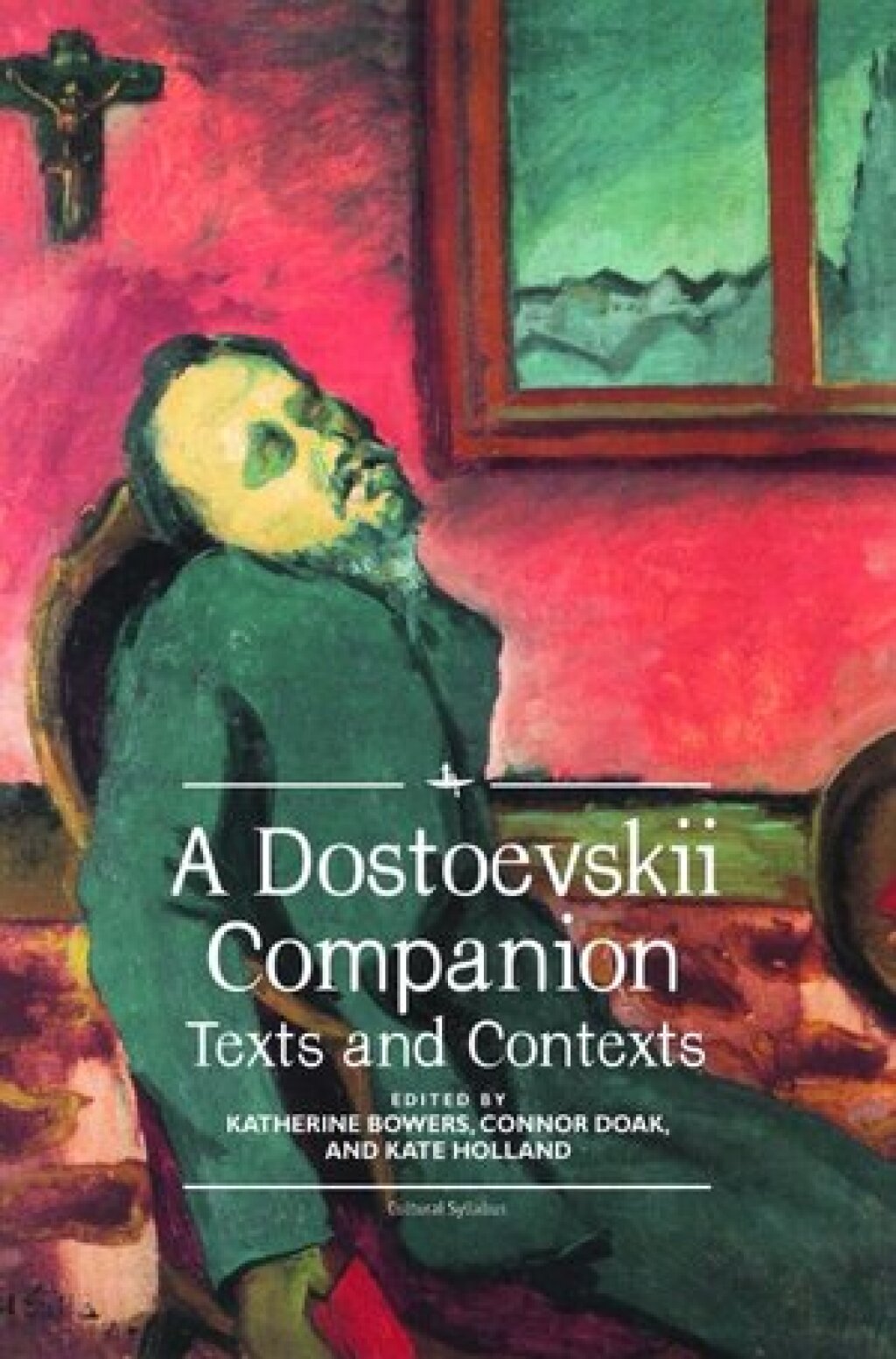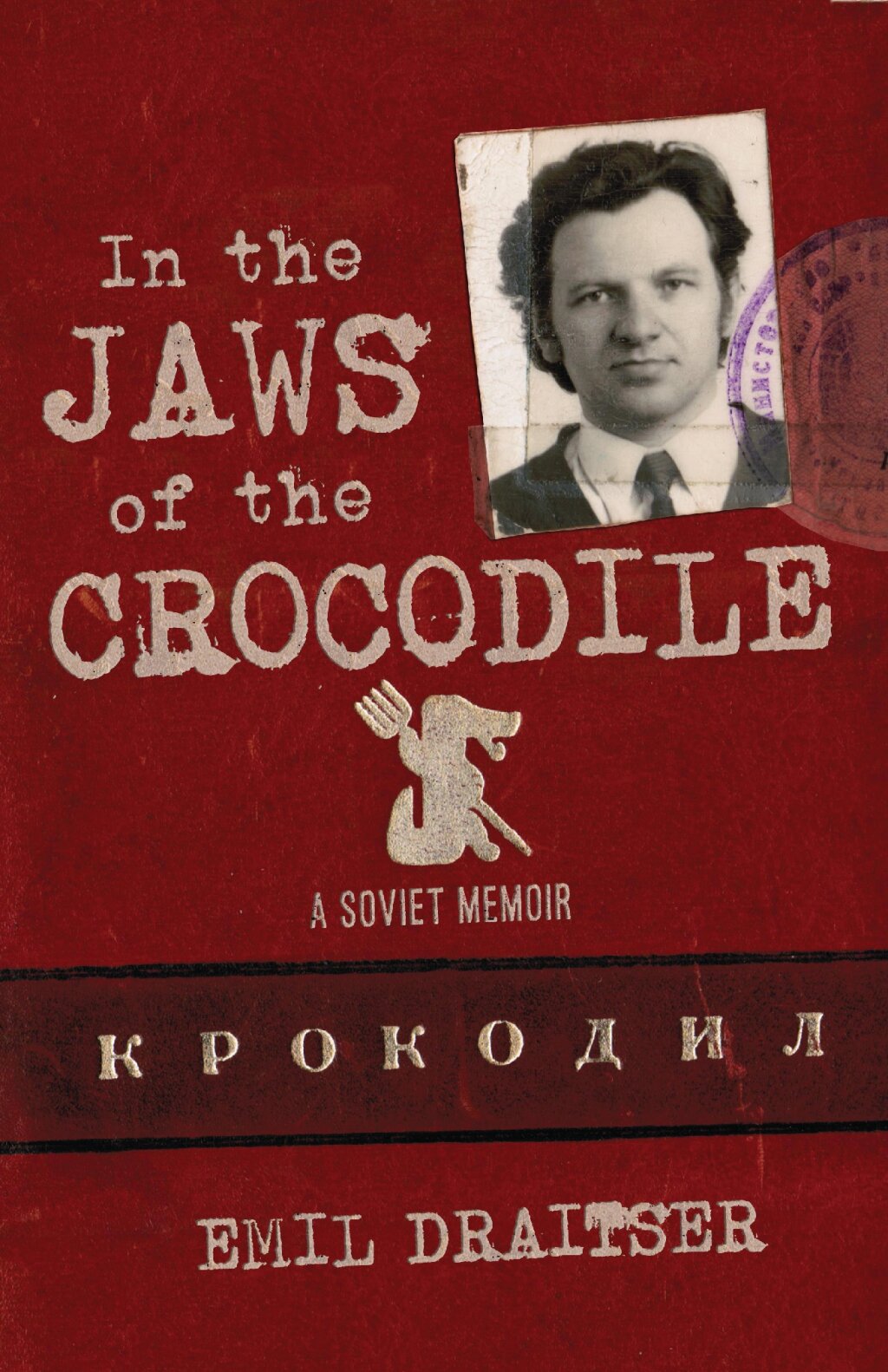The below interview with Katia Bowers (KB), Connor Doak (CD), and Kate Holland (KH), editors of the volume A Dostoevskii Companion: Texts and Contexts, originally appeared on The Bloggers Karamazov, the official blog of the North American Dostoevsky Society.
Katherine Bowers is an Assistant Professor of Slavic Studies at the University of British Columbia. A specialist in nineteenth-century Russian literature and culture, she is currently completing a monograph about gothic fiction’s influence on Russian realism. She is the editor of Bloggers Karamazov and sits on the Executive Board of the North American Dostoevsky Society.
Connor Doak is a lecturer in Russian at the University of Bristol. He works primarily on nineteenth- and twentieth-century Russian literature, with a special interest in gender and sexuality in Russian culture. He has authored articles on authors including Dostoevskii, Chekhov, Petrushevskaia and Pushkin, and is currently working on a study of masculinity in Maiakovsky’s poetry.
Kate Holland is Associate Professor of Russian Literature at the University of Toronto. She is the author of the monograph, The Novel in the Age of Disintegration: Dostoevsky and the Problem of Genre in the 1870s (2013), as well as articles on Dostoevskii, Tolstoy, Herzen, Saltykov-Shchedrin and Veselovsky. Holland sits on the Executive Board of the North American Dostoevsky Society.
BK: Tell us a little about the volume. What kind of companion is it?
CD: It’s a volume for students of Dostoevskii, aimed at illuminating his works. But whereas most companion volumes—say, the Cambridge Companion series—provide a selection of new essays on different topics, our book brings together a selection of sources from Dostoevskii’s own time as well as the best critical writings, both classical and contemporary. So, for example, we have put in excerpts from Dostoevskii’s rather cranky letters about his row with Turgenev alongside the chapter in Demons where he pokes fun at Turgenev, as well as a classic critical essay from Robert Louis Jackson about how Dostoevskii and Turgenev might have more in common than either man might have wanted to admit!
KH: Near the beginning, we agreed that our volume should not advocate any one single interpretation of Dostoevskii’s works. Of course, the three of us have our own views about Dostoevskii and his work—sometimes quite strong views!—but we always tried to refrain from privileging one view over another. Instead we deliberately included critical voices that disagree with one another. Our goal here was to enable students to look at a critical discussion or historical evidence and form their own judgments based in their understanding of the material.
KB: We do provide a kind of introduction to each chapter of the volume, but this is to help students see the bigger picture or put together a web of themes rather than to guide students to a specific understanding. For example, in Chapter 7, called “Captivity, Free Will, and Utopia,” we collect a number of texts that are related to these themes, but students are invited to form their own judgments. (and to add to this conceptualization of a larger theme from their own explorations of Dostoevskii’s works).
BK: Tell us a little about the series the book appears in. What support did you have from the press and other sources?
KH: All three of us were already aware of the excellent Cultural Syllabus series at Academic Studies Press, and we knew they hadn’t done a Dostoevskii volume yet. The series is designed with undergraduate students in mind, for use in the classroom or for the general reader with an interest in the topic. Typically their books are collections of primary and secondary source materials on specific topics in Russian literary studies. Our book is the first in the series to focus on a nineteenth-century topic.
CD: Academic Studies Press have been wonderfully supportive of the project. They also provided part of the funding for the permission to reprint published work that isn’t out of copyright. These permissions can run into thousands of dollars for a volume like this…
KB: Outside of Academic Studies Press’s resources, the work on this volume was supported through funding from the University of British Columbia, where I’m based, and a Social Sciences and Humanities Research Council of Canada Connection Grant that Kate and I received for our project “Crime and Punishment at 150.” We are also grateful to Robert Louis Jackson, Igor Volgin, and Vladimir Zakharov and the Yale Review for giving us some permissions for free. Our wonderful team of student Research Assistants did great work in producing the volume: Anton Nonin, who also did a lot of new translations for the volume; Hanna Murray; and Kristina McGuirk. This project would not have been possible without them.
BK: There’s a huge bibliography on Dostoevskii. How did you decide which works to include?
KH: All three of us have taught Dostoevskii, so first of all we put our heads together and shared our ideas about what worked with students. We also asked other colleagues to share their syllabi, and looked at how they teach Dostoevskii…
KB: …And people teach Dostoevskii not just in Slavic departments, of course, but in philosophy, political science, theology, and other fields. The theologian George Pattison, for example, used to teach a graduate seminar on Dostoevskii at Oxford, so we looked at his syllabus, too. Our own volume is written primarily with students in literary studies in mind, but we hope it will be useful for folks in all disciplines.
CD: After we had a working draft of what we wanted to include, we circulated that to some of our most trusted colleagues in Russian Studies. And we met up with them at the International Dostoevsky Society Conference in 2016, which happened to be in Granada, Spain that year… So we had lunch on a sunny summer’s afternoon, with wine aplenty, and discussed. We’re very grateful to those who participated in this initial, extremely helpful discussion: Carol Apollonio, Deborah Martinsen, Robin Feuer Miller, Bill Todd, and Sarah Young.
BK: What were the most challenging aspects of creating the volume?
KB: Striking a balance between what is often taught and what would be valuable for further study took quite a lot of thought and revision. Our survey of syllabi revealed that the most popular works taught in class are, not surprisingly, Crime and Punishment, Notes from Underground, and Brothers Karamazov. However, including the full text of Notes from Underground, for example, would be redundant, as it is widely available elsewhere. We also decided not to have a chapter focused on each text as we felt this would encourage siloed reading. We conceived of this volume as a companion that encourages deeper thinking and exploration, so we focused instead on broad themes or topics for our chapters. The works we include are shorter texts and excerpts that we find revealing or provocative to think about when reading these longer novels. We also made a point of including critical scholarship about these more commonly taught texts, but as an organic part of the exploration of themes or topics. The one exception to this is the inclusion of an entire issue of the Writer’s Diary (the April 1877 issue, which includes “The Dream of a Ridiculous Man”). I wanted to add it because I assign it in my class and I think reading through a single issue is an important part of understanding how Dostoevskii’s journalistic fiction functions.
KH: One of my goals was to include some material from Dostoevskii’s penultimate novel, The Adolescent, which has historically been neglected by readers and critics but which engagingly articulates some of the questions of form that Dostoevskii struggled with. The novel itself, as well as its preparatory notebooks, contain some of the richest meditations on the novel and history anywhere in Dostoevskii’s works and can richly inform readings of his other works. Yet it’s hard to find manageable excerpts of this work and the criticism that deals with it. The Adolescent is a particularly messy, inconsistent work, and it’s rarely taught, yet it is narrated by a twenty-year old and I’ve found that it engages students on an emotional, visceral level even more than other of Dostoevskii’s novels. We hope that the volume might also inspire readers to go beyond the Dostoevskii of Crime and Punishment and The Brothers Karamazov.
CD: I did most of the work on the chapter called Dostoevskii’s “Others,” which looks at his representations of ethnic and religious minorities, as well as women. I find it very challenging to deal with Dostoevskii’s xenophobia and his anti-Semitism. We didn’t shy away from including some of his most controversial works, such as his essay “The Jewish Question” from A Writer’s Diary. I find that piece repugnant: by some twisted logic, he ends up blaming the Jews for the crimes perpetrated against them. It’s a horrible piece of intellectual gymnastics, and yet it remains one of the most topical things Dostoevskii ever wrote, as it’s the same kind of victim-blaming that we see among the radical right today. Gary Saul Morson writes somewhere that he felt a sense of betrayal when he first discovered Dostoevskii’s anti-Semitic writings, as if a long-standing friend had revealed some hidden part of his nature that he couldn’t fathom. I, too, find it hard to reconcile Dostoevskii’s empathy and his preaching of forgiveness with this xenophobic side of his nature.
BK: Is there anything you wanted to include in the book that you didn’t have space for?
CD: I was keen to include a section discussing the different translations of Dostoevskii. Students aren’t always aware of how much of a difference translation actually makes, and often opt for the cheapest one, or the one that happens to be available online. But whether you read Crime and Punishment in Garnett’s translation, or Ready’s, or Pasternak Slater’s, or Pevear & Volokhonsky’s, really makes a substantial difference to the reading experience. However, it proved difficult to include discussion of this issue in a succinct way: we would have had to provide extensive quotation of all the different versions, and add a lot of new commentary ourselves, as there’s not a lot of serious scholarship to draw on when it comes to comparing the translations that has been done. I think, then, the translation comparison is probably a separate project.
KH: I would have liked to have included more Russian scholarship. The story of Dostoevskii’s reception in Russia throughout the twentieth century, during the glasnost’ years, and following the fall of the Soviet Union is a fascinating one, yet it would have required significantly more space to contextualize this scholarship as well as more resources to translate it. Another fascinating topic would have been to look at “Global Dostoevskii.” Dostoevskii’s influence looks different in different parts of the world, and recent loose adaptations of his novels in literature and film have served to highlight his importance in the Philippines, in Latin American countries, in Korea and Japan, and in South Africa.
KB: One aspect of my Dostoevskii class is some engagement with contemporary approaches to the text like film adaptations and digital media. I originally wanted to include an excerpt from one of the Twitter projects that I’ve worked on, either @YakovGolyadkin or @RodionTweets. While I do assign these, in part, to my students to read, there wasn’t space for them in the volume as they would require significant contextualizing. Similarly, adding some discussion of film adaptations of Dostoevskii would have been interesting, but this also would have required significantly more contextualization, and a dedicated section on film adaptations would have unbalanced our volume. These are valuable ways of experiencing the text, particularly for our twenty-first century students, but in the end we stuck with the text, which, in the case of Dostoevskii, is already a huge undertaking!
BK: Dostoevskii is one of the few ‘classic’ writers who can still attract significant undergraduate enrolment numbers. Why do you think he still appeals to readers today?
CD: We live in a world that can be pretty nasty. But students aren’t used to talking about that nastiness, or rather, they tend to project it onto others, and can’t recognize it in themselves. We live in an affirmative, self-help culture, in which we’re told to love ourselves for who we are… and that means we’re very reluctant to recognize the dark side of our nature, to admit just how nasty human beings can be. Reading Dostoevskii is like going into a frightening hall of mirrors, where we see ourselves reflected, but it’s an exaggerated version of ourselves, with all our faults magnified… That’s why Dostoevskii is perennially rewarding—but also frightening—I guess.
KB: The aspect of Dostoevskii my students are most drawn to is his message of compassion. The kind of ethical interactions he puts forward as an ideal but also as a possible outcome appeal to students who see injustice, suffering, and cruelty in the world and want to do something about it. That being said, this message comes, in Dostoevskii, cloaked in the most amazing, sensationalistic melodrama with larger than life characters. Reading Dostoevskii is harrowing and fantastic, but in the end the thing that sticks with students is the larger message that change is possible.
KH: Dostoevskii is a novelist of ideas, and readers and students alike are still drawn to his works for the revolutionary ways in which they express ideas, as well as for those ideas themselves, which can still shock and fascinate after almost 200 years. The ways in which his works address the power relations that foreground all human relationships, the fraught and messy nature of all emotional connections, and the divided nature of selfhood all seem to strike particular chords with students and readers at the present moment.
A Dostoevskii Companion: Texts and Contexts is available now from Academic Studies Press (20% off with code COMPANION). A sampler from the volume is available for download here.



